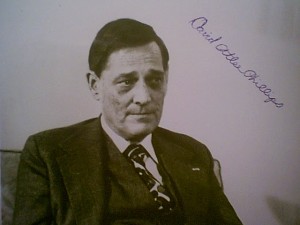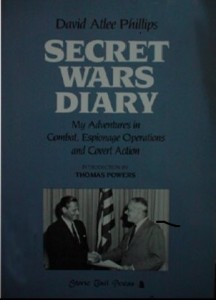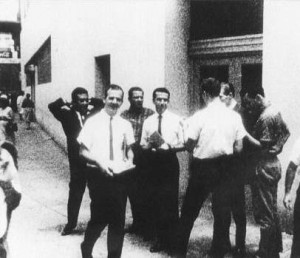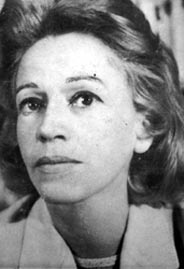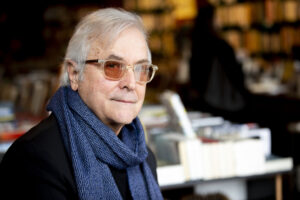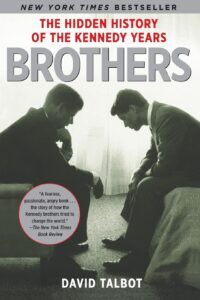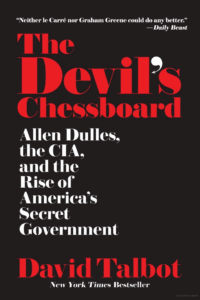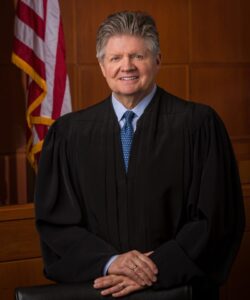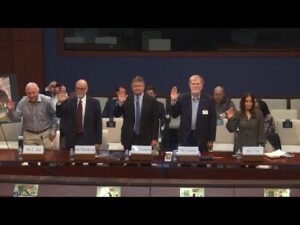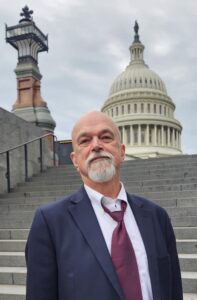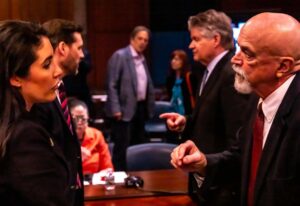© 2015 Dan Hardway —
Phil Shenon and I agree on at least a few things. In any resolution of the mysteries surrounding the assassination of President John F. Kennedy, Mexico City will undoubtedly be important. The investigation into what happened there in 1963 was, for some reason, seriously curtailed by the U.S. government. The government has, since then, fought tooth and nail to keep the full story about what happened there secret.
While I have never met Mr. Shenon, I have spoken with him several times by telephone. I first heard from him when he called me around 2011. He introduced himself as a reporter for Newsweek Magazine. He said he was working well in advance on an article for that magazine for the 50th anniversary of JFK’s murder. He wondered whether I would be willing to talk about the HSCA’s investigation in Mexico City. I agreed to speak with him.
Over the course of that first conversation, and several follow-up calls from him over the next couple of years, it became apparent to me that Mr. Shenon was only interested in our work investigating what had happened in Mexico City in 1963 insofar as it might provide some kind of basis for linking Oswald to Castro or the Cubans. I tried to discuss the details of the HSCA investigation into what happened in Mexico City in its anomalous issues, but he was uninterested in those details. While there is an acknowledgment in his book, A Cruel and Shocking Act, stating that Ed Lopez and I were “generous with their time and interviews for this book,” precious little, if any, of what we shared with him made it into the book or any of his subsequent writing on the subject of Mexico City. Not only does Mr. Shenon ignore the post-HSCA materials we tried to bring to his attention, he also ignores the primary thrust of our report written for the HSCA.
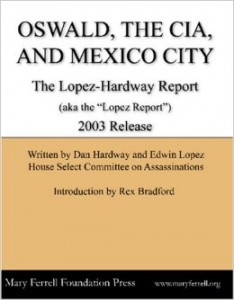
I would not take issue with Phil Shenon if I thought what he is claiming is, merely, that the possibility of Cuban assistance to Oswald should be investigated. While I think the evidence of that is very weak at best, I will not deny that any avenue of investigation that remains open should be pursued. What I take issue with Mr. Shenon about is his single-minded concentration on that one issue and the resultant misrepresentation of facts and questions related to, and arising from, Lee Oswald’s activities in Mexico City. It appears to me that Shenon may be carrying water for the proponents of the original conspiracy theory – that Castro did it – rather than offering any objective review of the complete evidentiary base of that underlies the Mexico City visit. Shenon deliberately ignores the indicators and evidence that suggest Oswald’s trip to Mexico was either designed in advance, or spun in the aftermath, to give the appearance of Cuban and Soviet collusion in the Kennedy assassination.
Shenon’s thesis, as most recently explicated in his article in Politico, “What Was Lee Harvey Oswald Doing in Mexico?”, is built on suspicions expressed by some government officials after the assassination and Charles Thomas’s reporting of the Duran twist party – a report based on a story first told by Elena Garro de Paz. Many had initial suspicions after the assassination: Lyndon Johnson alleged a communist conspiracy within twenty minutes of JFK’s death; Bobby Kennedy’s first question to CIA Director John McCone that day was, “Did some of your guys do this?” (The Warren Commission, in Executive Session, was very concerned about Oswald’s intelligence connections, but Allen Dulles told them it was something that couldn’t really be proven, as a good intelligence officer would lie under oath to the Commission.) When Shenon and I talked, I tried to get him to consider evidence and facts that have come to light about Mexico City and the CIA’s handling of various investigations since, including the one I worked on in 1978, in his evaluation of the twist party story that lies at the root of his speculations. My efforts had no effect. Any possible explanation other than Cuban complicity has been ignored by Mr. Shenon who seems hell-bent on promoting the idea that Castro was behind the assassination, refusing to address any other possibility.
I tried, in vain as it turns out, to get Mr. Shenon to consider that what we had learned about Oswald’s activities, and the government’s reaction to those activities, could support a different explanation which also pointed to an additional avenue of investigation that needed to be publicized and followed. In my view, Oswald’s activities are more consistent with his being involved in an intelligence operation being run by U.S. intelligence than with him trying to make contact with Cubans to garner support for an assassination attempt on the sitting leader of this country.
To fully appreciate why I say that, a little background from Washington in 1978, is necessary. In 1978 the CIA resisted the HSCA’s inquiry into Mexico City more than any other area of inquiry. The chief counsel, G. Robert Blakey, told the Committee on August 15, 1978, “[T]he deeper we have gotten into the Agency’s performance in Mexico City, the more difficult they have gotten in dealing with us, the more they have insisted on relevance, the more they have gone back in effect on their agreement to give us access to unsanitized files. For a while we had general and free access to unsanitized files. That is increasingly not true in the Mexico City area….” And we have since learned that they used George Joannides to shut down the investigation into Oswald and Mexico City. In doing so, they lied to us about who he was. He ran propaganda operations in
Miami in 1963-64 and was the case officer for DRE, the anti-Castro group that scored the anti-Fair Play for Cuba Committee coup using Oswald in New Orleans in August of 1963. As G. Robert Blakey has since acknowledged, “The CIA not only lied, it actively subverted the investigation.” I think the CIA expected we would take the superficial approach of considering the “Castro did it” theory, but when we went beyond the initial appearances and began pushing our investigation into the propaganda sources, seeking interviews with the actual penetration and surveillance agents, seeking to find others in Mexico City who may have seen Oswald, then the Agency resistance to our investigation turned to a stonewall. Shouldn’t it be enough to raise serious questions that when a Congressional Committee investigating specific disinformation operations ran by the CIA, the CIA brings one of those involved in the operation being investigated and uses him in an undercover capacity to forestall and subvert the investigation? But that’s not all.
Consider the scenario of U.S. intelligence involvement in Oswald’s activities in Mexico City that we were not able to fully investigate in 1978. Let’s start with some background on David Phillips. David Phillips was one of, if not the, most experienced, ingenious, respected, and qualified disinformation officers in the CIA. In 1963 he was stationed in Mexico City, but, in early October, he was temporarily assigned to duty at Headquarters because he was being promoted from running anti-Castro propaganda operations to overseeing all anti-Castro operations in the
Western Hemisphere. He was an experienced hand. In the late 1950’s he had been under non-diplomatic cover in Havana, where he worked with student leaders who would eventually form the Directorio Revolucionario Estudantil (“DRE”). During the Bay of Pigs, Phillips was stationed at CIA Headquarters where he had responsibility for the propaganda and psychological warfare aspects of the antiCastro operations. In running those operations he not only oversaw the operations he ran personally from Headquarters, he was also the supervisor of the propaganda operations flowing out of the JMWAVE station in Miami by William Kent (aka Doug Gupton, William Trouchard). When the students who had been recruited by Phillips fled Cuba, they were reorganized under Kent’s tutelage into the DRE based in Miami.
Phillips was transferred to Mexico City later in 1961 after the Bay of Pigs. Kent was promoted to Headquarters, and George Joannides took over Kent’s position in Miami, including supervision of DRE. While still stationed in Headquarters in the early 60’s, David Phillips had worked with Cord Meyer to develop the first disinformation campaign aimed at discrediting and disrupting a group of Castro sympathizers who had organized themselves into the Fair Play for Cuba Committee (FPCC). In the summer of 1963 Lee Harvey Oswald formed a chapter of the FPCC in New Orleans. In August of 1963 Lee Harvey Oswald, still in New Orleans, had an encounter with DRE which led to a lot of publicity linking Oswald to communists, labeling him as pro-Castro, and discrediting the FPCC. In July and August of that year there is strong evidence that Oswald was used to identify and contact pro-Castro students at Tulane University. In early September, Oswald was seen with David Philips in Dallas.
On September 16, 1963, the CIA informed the FBI that it was considering action to counter the activities of the FPCC in foreign countries. To my knowledge, the operational files on this new anti-FPCC operation have never been released by the CIA. In New Orleans, on September 17, 1963, Oswald applied for, and received, a Mexican travel visa immediately after William Gaudet, a known CIA agent, had applied for one. On September 27 Oswald arrived in Mexico City. This activity did not occur suddenly or in a vacuum. Oswald had started establishing his pro-Castro bona fides earlier that summer in New Orleans, including establishing an FPCC chapter there.
There are too many similarities between Oswald’s activities in New Orleans and Mexico City to simply dismiss, without investigation or discussion, the possibility that he was being used in an intelligence operation, either wittingly or unwittingly, in both cities. In addition to his contacts with the Soviet and Cuban diplomatic facilities in Mexico City, which could have been part of an intelligence dangle, an attempt to discredit the FPCC, or both, there is now also evidence of Oswald’s contacts with students at the National Autonomous University of Mexico and his presence at social events with Cuban Consulate
employees. David Phillips frequently lied about Oswald and Mexico City, but in a footnote in a little known book he self-published, Secret Wars Diary, he wrote: “I was an observer of Cuban and Soviet reaction when Lee Harvey Oswald contacted their embassies.” [Emphasis added.] One purpose served by an intelligence dangle is to enable the dangling agency to observe the reaction and, from that observation, identify roles of employees, procedures and processes of the enemy.
There can be little doubt that Oswald’s activities, especially the more flagrant, blatant and egregious ones such as those alleged by Shenon to have occurred at the Cuban Consulate, could only have scandalized the Cuban diplomats who heard the threats and bluster – all to the discrediting of the FPCC, just as the publicity about the New Orleans encounter between Oswald and the DRE formed one of the propaganda nails in that organization’s coffin. It is much more likely, in my opinion, that the seasoned Cuban diplomats would be offended than it is that they would support someone exhibiting Oswald’s alleged behavior to attempt an assassination. It is much more likely that the Cuban diplomats would have, as the evidence shows they did, consider Oswald as a U.S. intelligence provocation. The Cubans knew of the surveillance on their facilities. Why would they use someone to do such a job who showed up under surveillance and announced his plans? On the other hand, someone as provocative as Oswald should have generated a cascade of response that, when observed by the watchers, would have revealed an abundance of information. It could also serve to discredit the FPCC with the Cubans. The CIA prevented us, in 1978, from interviewing then surviving penetration and surveillance agents who would have known more about such an operation.
In 1978, we knew not only about the allegations of the twist party, but also about the stories of Oswald’s contact with students. The CIA prevented us from interviewing Oscar Contreras, a student Oswald contacted. But Anthony Summers, and others, have interviewed him since. Contreras acknowledges that Oswald, in late September, 1963, approached him and three other students who were members of a pro-Castro student organization. He asked them for help getting a visa to Cuba from the Consulate. Contreras did have contacts at the Consulate and spoke to the Consul and an intelligence officer. Both warned him to have nothing to do with Oswald as they suspected he was trying to infiltrate proCastro groups. Contreras still wonders how Oswald identified him and his friends as the students, out of the thousands attending the University, as the ones with contacts in the Consulate. Shenon, some way or another, sees this incident as supporting possible Cuban involvement in the assassination. No mention is made to the similarity to what Oswald was doing with Tulane students in New Orleans.
While in New Orleans, Ruth Paine had asked fellow Quaker, Ruth Kloepfer, to check on the Oswalds while they were in New Orleans. Mrs. Kloepfer’s husband was a professor at Tulane University. There is information in the extensive records in this case that Oswald passed out FPCC leaflets near Tulane University and the homes of some of the professors there who were members of a local leftist group. The
individuals who helped pass out pamphlets on the last occasion when Oswald passed out his FPCC literature in downtown New Orleans, were introduced by Oswald as students from Tulane. There are, keeping things in parallel, indications in the documentation about the case that Oswald, while in Mexico City, made contact with Quakers studying at the Autonomous University. There are indications that one Quaker student at the University at that time was an active agent of the CIA, although that person has never been identified and it has not been determined that he had any contact with Oswald in Mexico City. The reason that it has not been determined is that it has not been investigated.
It has to be pointed out that June Cobb, a known CIA agent, was very involved in Agency actions aimed at the FPCC in the early 1960’s. She appears again as the first person to report Elena Garro de Paz’s story about the Duran/Oswald twist party. At the time she made that report to the Mexico City CIA station, Cobb, a CIA asset, was renting a room from Elena Garro de Paz, Sylvia Duran’s cousin. And Shenon bases most of
what he writes on a supposition that, based on this twist-party story, Duran was at the center of the Cuban recruitment of Oswald. But the fact is that it is still very much in question whether Duran had been recruited as an asset by the CIA. David Phillips, as well as other CIA employees, in 1978, were of the opinion that she may have been targeted for recruitment by the CIA. The CIA, then and since, has gone out of its way to keep details about Duran buried, claiming, among other things, to have destroyed her Mexico City P file.
But the point is, the activities in Mexico City in September and October, 1963, are a capsule version of Oswald’s activities in New Orleans in June, July and August of 1963. In the context of the other information we’ve learned about the CIA’s FPCC black propaganda operation, the people involved in those operations and the role of at least one of those people, George Joannides, in subverting the HSCA investigation, how can anyone not seriously consider whether Oswald’s Mexico City activities were part of a CIA anti-FPCC operation? The very first conspiracy theory, that Castro and the communists killed JFK – the one expressed by President Johnson 20 minutes after the assassination, and first seeing print in the DRE’s CIA funded newspaper, Trinchera, on November 23, 1963 – still has followers and proponents, the latest being Phil Shenon. None of the proponents, it seems, have ever really considered whether they may be the victims – or a part – of a very good, deliberate disinformation operation – possibly the best Phillips and Joannides ever ran.
________________________
Dan Hardway, J.D. Attorney in private practice; former investigator, House Select Committee on Assassinations.


